- General Workflow
- play_arrow Apstra GUI
- play_arrow Design
- Logical Devices (Datacenter Design)
- Interface Maps (Datacenter Design)
- Rack Types (Datacenter Design)
- Templates (Datacenter Design)
- Config Templates (Freeform Design)
- play_arrow Configlets (Datacenter Design)
- play_arrow Property Sets (Datacenter Design)
- TCP/UDP Port Aliases (Datacenter Design)
- Tags (Design)
- play_arrow Devices
- Device Configuration Lifecycle
- play_arrow Managed Devices
- play_arrow System Agents
- play_arrow Pristine Configuration
- play_arrow Telemetry
- play_arrow Apstra ZTP
- play_arrow Resources Introduction
- play_arrow Freeform Reference Design
- Create / Delete Freeform Blueprint
- Freeform Blueprint Summary and Dashboard
- Topology (Freeform)
- play_arrow Systems (Freeform)
- Device Context (Freeform)
- play_arrow Links (Freeform)
- play_arrow Resource Management
- play_arrow Config Templates (Freeform Blueprint)
- Import Device Profile (Freeform)
- play_arrow Property Sets (Freeform Blueprints)
- play_arrow Tags (Freeform Blueprint)
- Tasks - Staged (Freeform)
- play_arrow Active
- Commit Blueprint
- Time Voyager
- play_arrow Analytics
- Configure Auto-Enabled Dashboards
- Instantiate Predefined Dashboard
- Create Analytics Dashboard
- Edit / Delete Dashboard
- Anomalies (Analytics)
- Widgets Overview
- Create Anomaly Heat Map Widget
- Create Stage Widget
- Edit / Delete Widget
- Probes
- Instantiate Predefined Probe
- Create Probe
- Import / Export Probe
- Edit / Delete Probe
- play_arrow Providers (External Systems)
- play_arrow Platform
- play_arrow User/Role Management (Platform)
- play_arrow Security (Platform)
- Syslog Configuration (Platform)
- Receivers (Platform)
- Global Statistics (Platform)
- Event Log (Platform)
- play_arrow Apstra VM Clusters
- play_arrow Developers (Platform)
- play_arrow Juniper Technical Support
- Favorites & User
- play_arrow Apstra Server Management
- Monitor Apstra Server via CLI
- Restart Apstra Server
- Reset Apstra Server VM Password
- Reinstall Apstra Server
- Apstra Database Overview
- Back up Apstra Database
- Restore Apstra Database
- Reset Apstra Database
- Migrate Apstra Database
- Replace SSL Certificate on Apstra Server with Signed One
- Replace SSL Certificate on Apstra Server with Self-Signed One
- Change Apstra Server Hostname
- Apstra CLI Utility
- play_arrow Guides
- play_arrow References
- play_arrow Apstra Feature Matrix
- Qualified Devices and NOS Versions
- NOS Upgrade Paths (Devices)
- play_arrow Predefined Dashboards (Analytics)
- Device Environmental Health Summary Dashboard (New in 4.1.2)
- Device Health Summary Dashboard
- Device Telemetry Health Summary Dashboard (New in 4.1.2)
- Drain Validation Dashboard
- Throughput Health MLAG Dashboard
- Traffic Trends Dashboard
- Virtual Infra Fabric Health Check Dashboard
- Virtual Infra Redundancy Check Dashboard
- play_arrow Predefined Probes (Analytics)
- BGP Session Flapping Probe
- Bandwidth Utilization Probe
- Critical Services: Utilization, Trending, Alerting Probe
- Device Environmental Checks Probe (New in 4.1.2)
- Device System Health Probe
- Device Telemetry Health Probe
- Device Traffic Probe
- Drain Traffic Anomaly Probe
- ECMP Imbalance (External Interfaces) Probe
- ECMP Imbalance (Fabric Interfaces) Probe
- ECMP Imbalance (Spine to Superspine Interfaces) Probe
- ESI Imbalance Probe
- EVPN Host Flapping Probe
- EVPN VXLAN Type-3 Route Validation Probe
- EVPN VXLAN Type-5 Route Validation Probe
- External Routes Probe
- Hot/Cold Interface Counters (Fabric Interfaces) Probe
- Hot/Cold Interface Counters (Specific Interfaces) Probe
- Hot/Cold Interface Counters (Spine to Superspine Interfaces) Probe
- Hypervisor and Fabric LAG Config Mismatch Probe (Virtual Infra)
- Hypervisor and Fabric VLAN Config Mismatch Probe (Virtual Infra)
- Hypervisor MTU Mismatch Probe (Virtual Infra NSX-T Only)
- Hypervisor MTU Threshold Check Probe (Virtual Infra)
- Hypervisor Missing LLDP Config Probe (Virtual Infra)
- Hypervisor Redundancy Checks Probe (Virtual Infra)
- Interface Flapping (Fabric Interfaces) Probe
- Interface Flapping (Specific Interfaces) Probe
- Interface Flapping (Specific Interfaces) Probe
- Interface Policy 802.1x Probe
- LAG Imbalance Probe
- Leafs Hosting Critical Services: Utilization, Trending, Alerting Probe
- Link Fault Tolerance in Leaf and Access LAGs Probe
- MLAG Imbalance Probe
- Multiagent Detector Probe
- Optical Transceivers Probe
- Packet Discard Percentage Probe
- Spine Fault Tolerance Probe
- Total East/West Traffic Probe
- VMs without Fabric Configured VLANs Probe (Virtual Infra)
- VXLAN Flood List Validation Probe
- play_arrow Probe Processors (Analytics)
- Processor: Accumulate
- Processor: Average
- Processor: Comparison
- Processor: EVPN Type 3
- Processor: EVPN Type 5
- Processor: Extensible Service Data Collector
- Processor: Generic Graph Collector
- Processor: Generic Service Data Collector
- Processor: Interface Counters
- Processor: Logical Operator
- Processor: Match Count
- Processor: Match Percentage
- Processor: Match String
- Processor: Max
- Processor: Min
- Processor: Periodic Average
- Processor: Range
- Processor: Ratio
- Processor: Service Data Collector
- Processor: Set Comparison
- Processor: Set Count
- Processor: Standard Deviation
- Processor: State
- Processor: Subtract
- Processor: Sum
- Processor: System Utilization
- Processor: Time in State
- Processor: Traffic Monitor
- Processor: Union
- Processor: VXLAN Floodlist
- Configlet Examples (Design)
- Apstra-CLI Commands
- Apstra EVPN Support Addendum
- Apstra Server Configuration File
- Agent Configuration File (Devices)
- Graph
- Juniper Apstra Technology Preview
NSX-T Edge and Connectivity Templates
Overview
Juniper Apstra supports NSX-T Edge connectivity requirements using connectivity templates. Connectivity templates can be used both where NSX-T Edge is hosted on Bare Metal or when used as a virtual machine.
We support VRF lite enabled Tier-0 edge Gateway using connectivity templates.
The use cases below relate to connectivity templates for NSX-T 3.0 Edge:
Set Up NSX-T Tier-0 Router BGP peering
Let's say NSX-T Edge VM uplinks are connected to ToR leaf devices via VLAN Transport
Zone which provides uplink network connectivity to physical infrastructure. Then
Edge VM will also have vmnics as per below screenshot which will help for tunnelling
traffic between Transport Nodes. This is called Overlay Transport Zone. 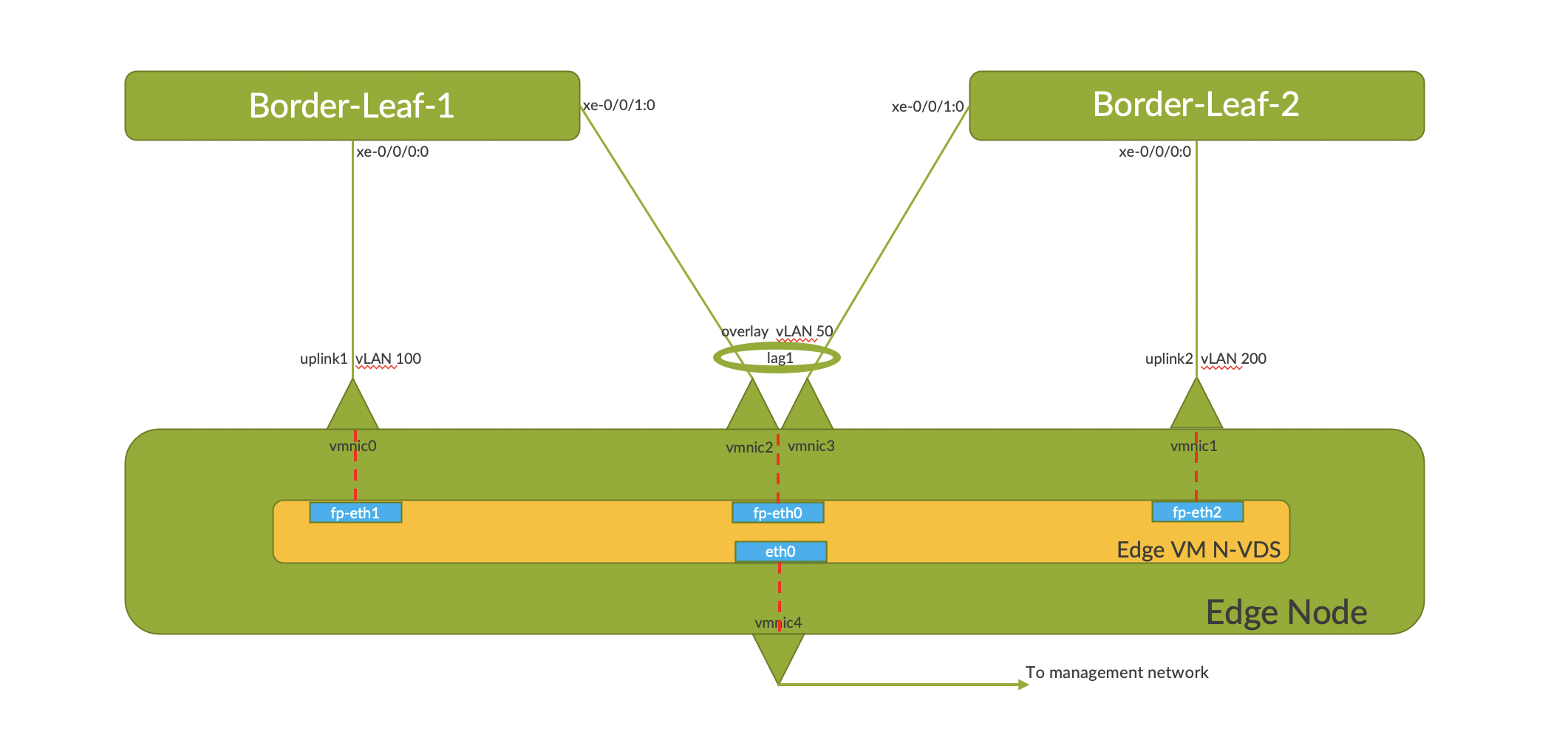
Create three Distributed Port Groups for respective vmnics and VLAN Trunking to be enabled on all the Nodes as per the networking depicted in previous screenshot.
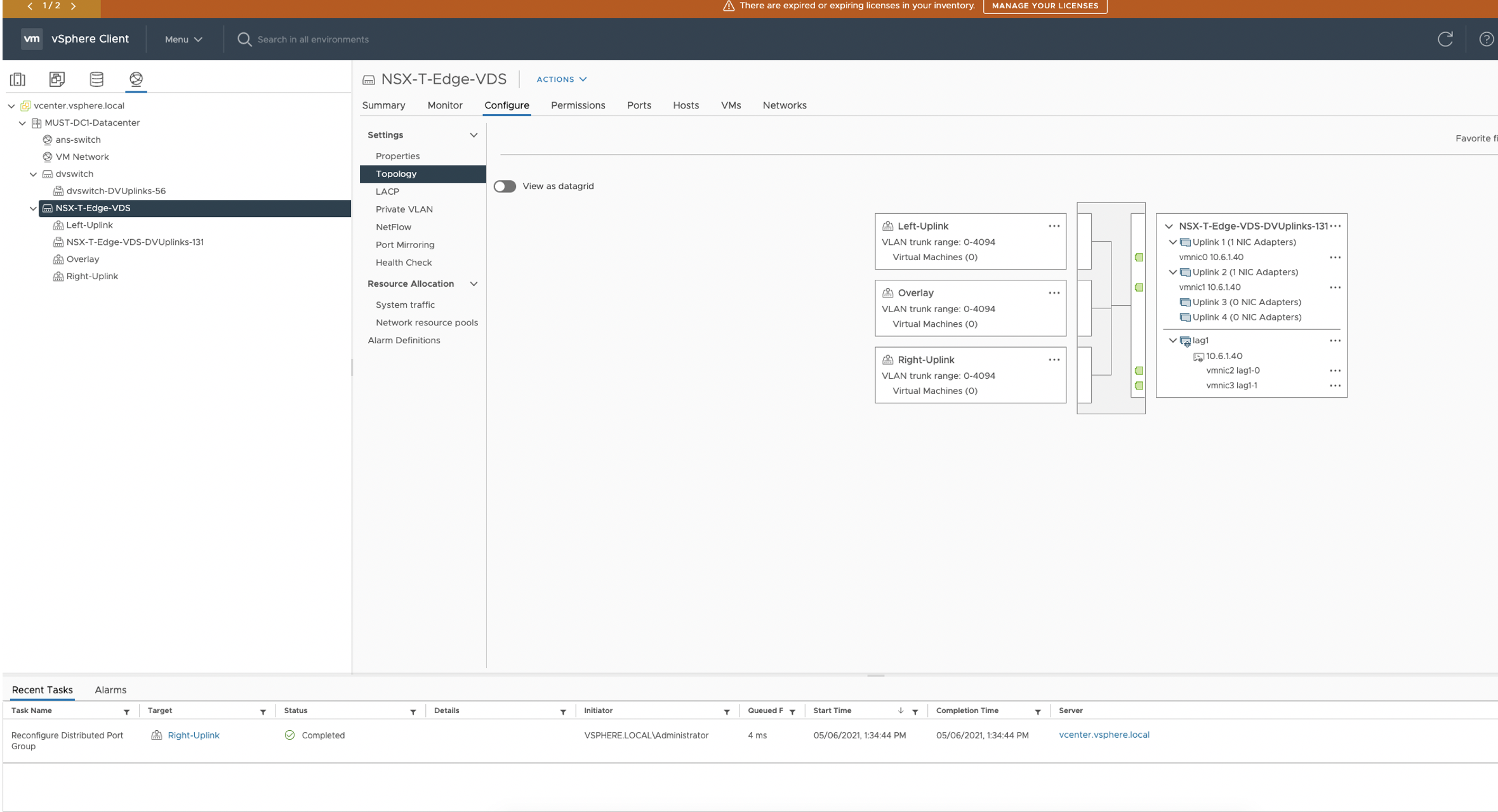
- Create respective Uplink profiles for Overlay and VLAN Transport Zones in NSX
Manager(UI).
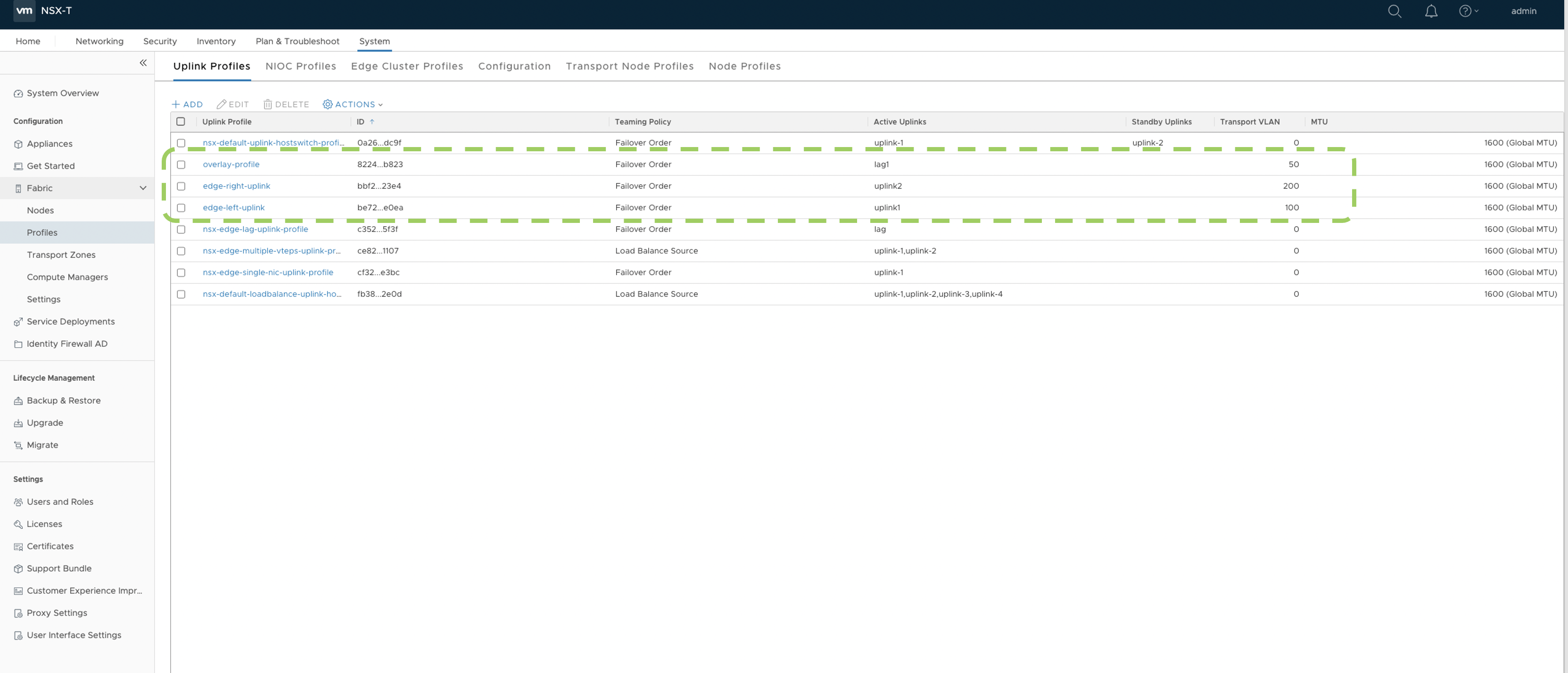
- After NSX-T is configured on the Transport nodes, a Tunnel endpoint(TEP) IP pool
is created in the NSX UI as below:
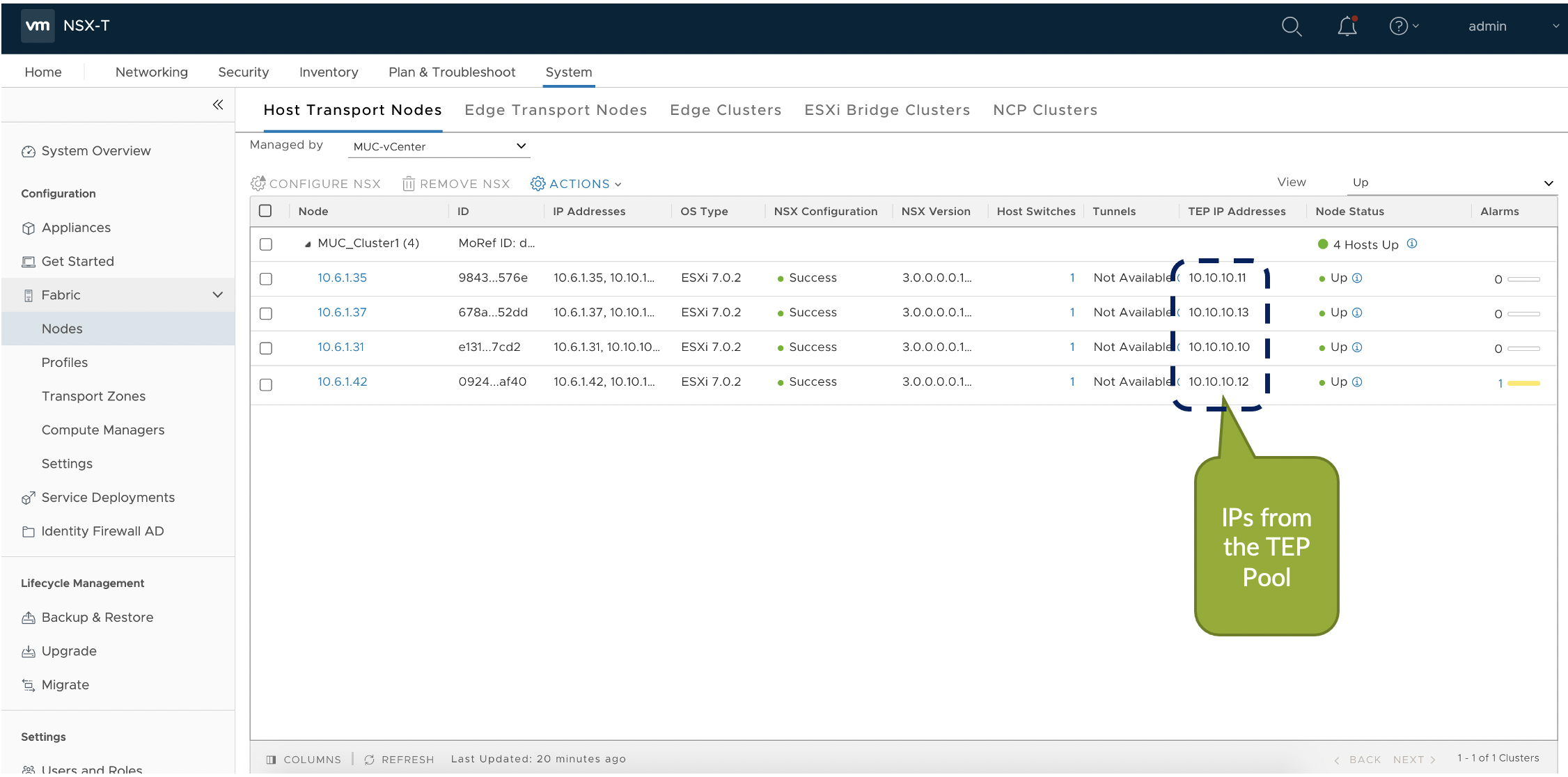
- Now create the NSX-T Edge VM in NSX Manager UI as below. It is used as the
device for north-south communication and BGP peering with Juniper Apstra Fabric.
Also configure VDS on the Edge Nodes under NSX Manager(UI) for respective
overlay and Uplink interfaces.
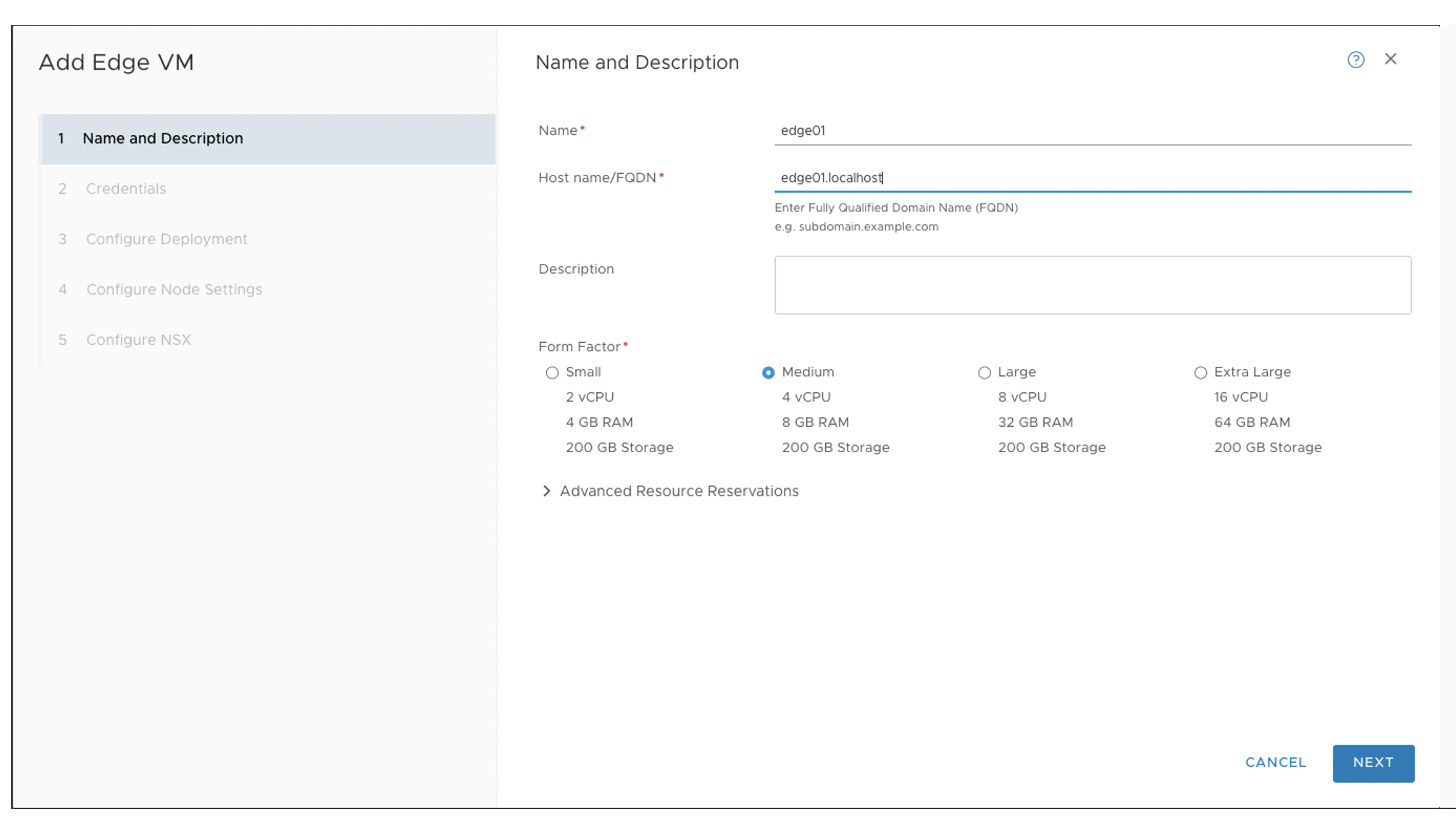
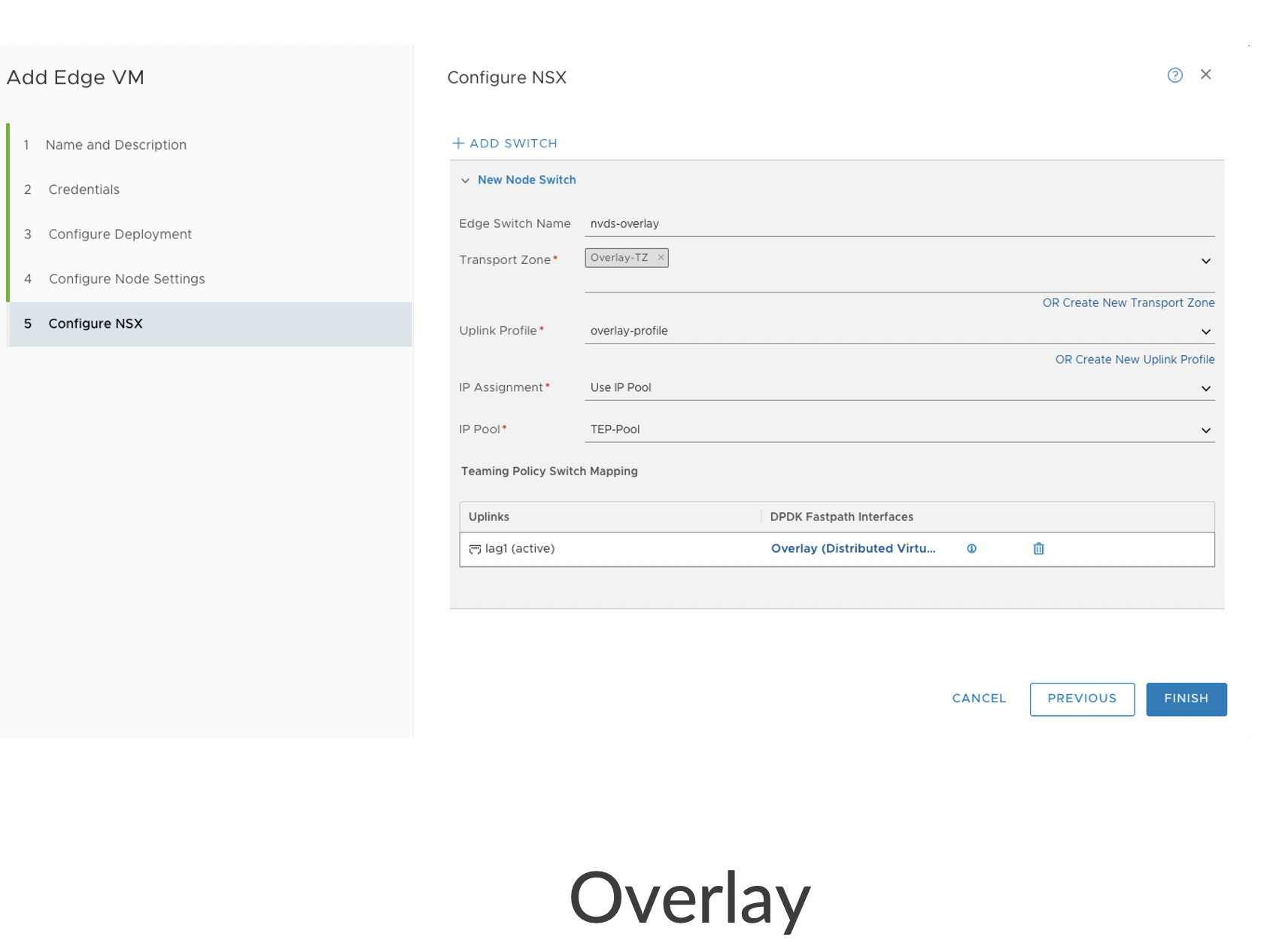
Tier-0 Gateway in the NSX-T Edge cluster provides a gateway service between the logical and physical network. In NSX Manager create T0 Gateway which connects to the ToR Leaf via BGP to communicate with the rest of Juniper Apstra Fabric.
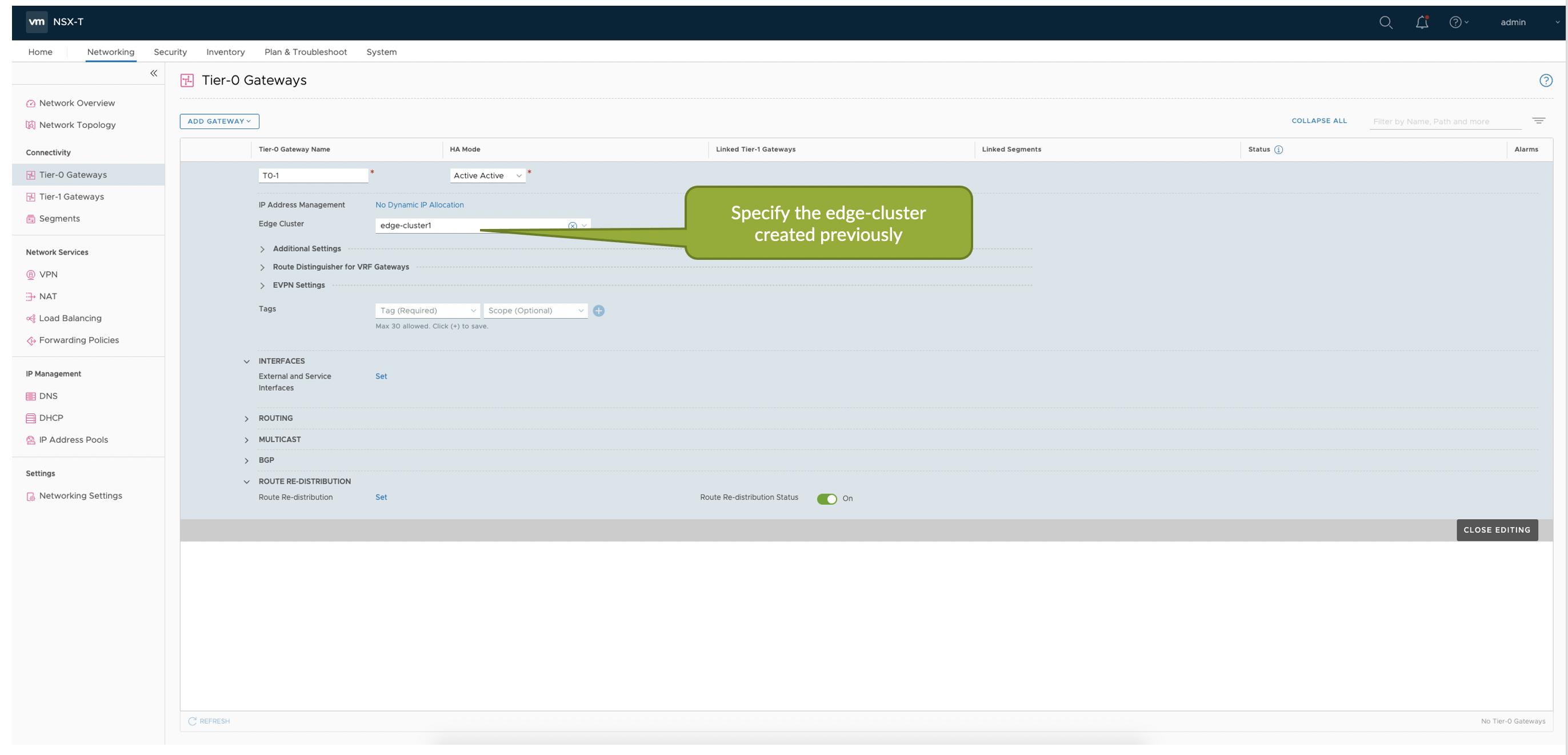
- Add External interfaces to the T0 GW which maps to the Uplink segments
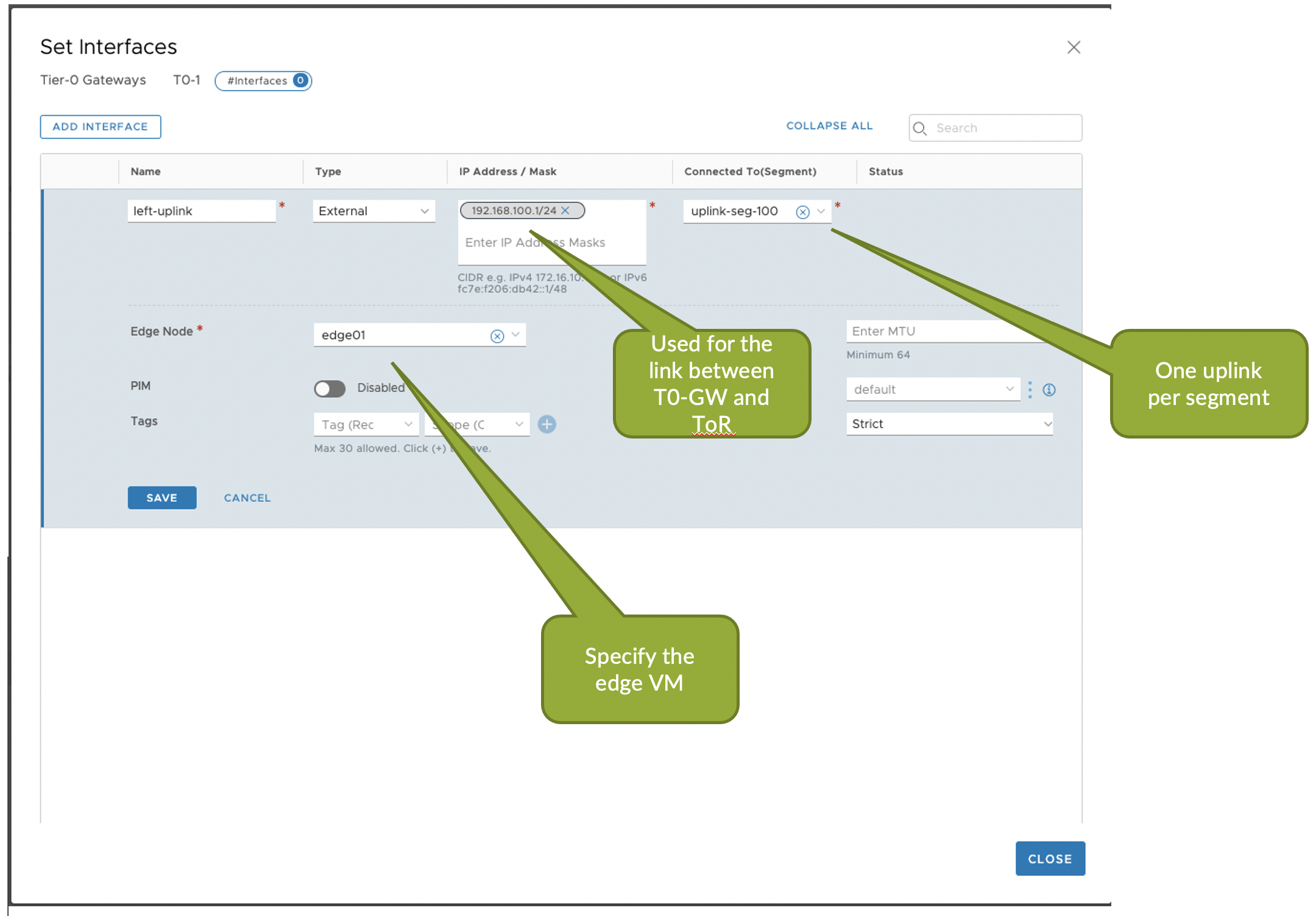
- Configure BGP peering on NSX T0 GW towards Juniper Apstra Fabric in NSX Manager.
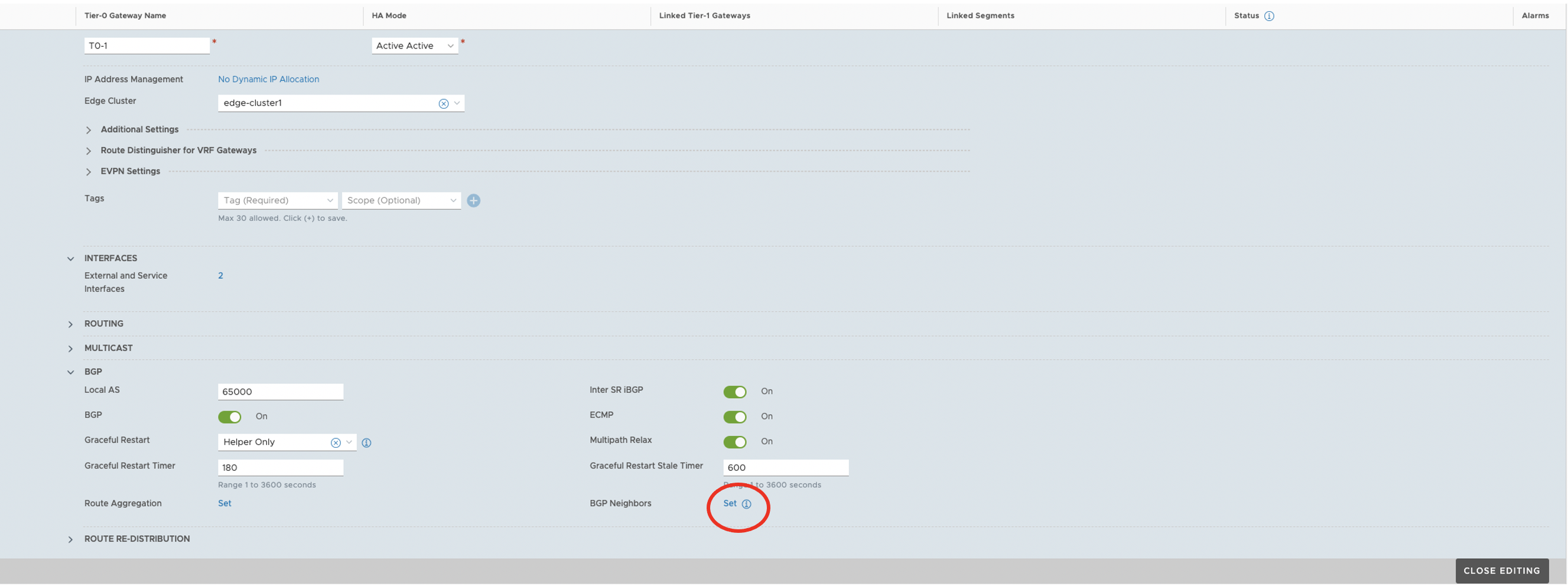
- For NSX-T integration with Juniper Apstra, see NSX-T Integration
First create a Routing Zone in Juniper Apstra UI which maps to a VRF. Then need to setup IP Link Primitive based connectivity template to establish BGP peering from the NSX-T Edge node to Fabric as below:
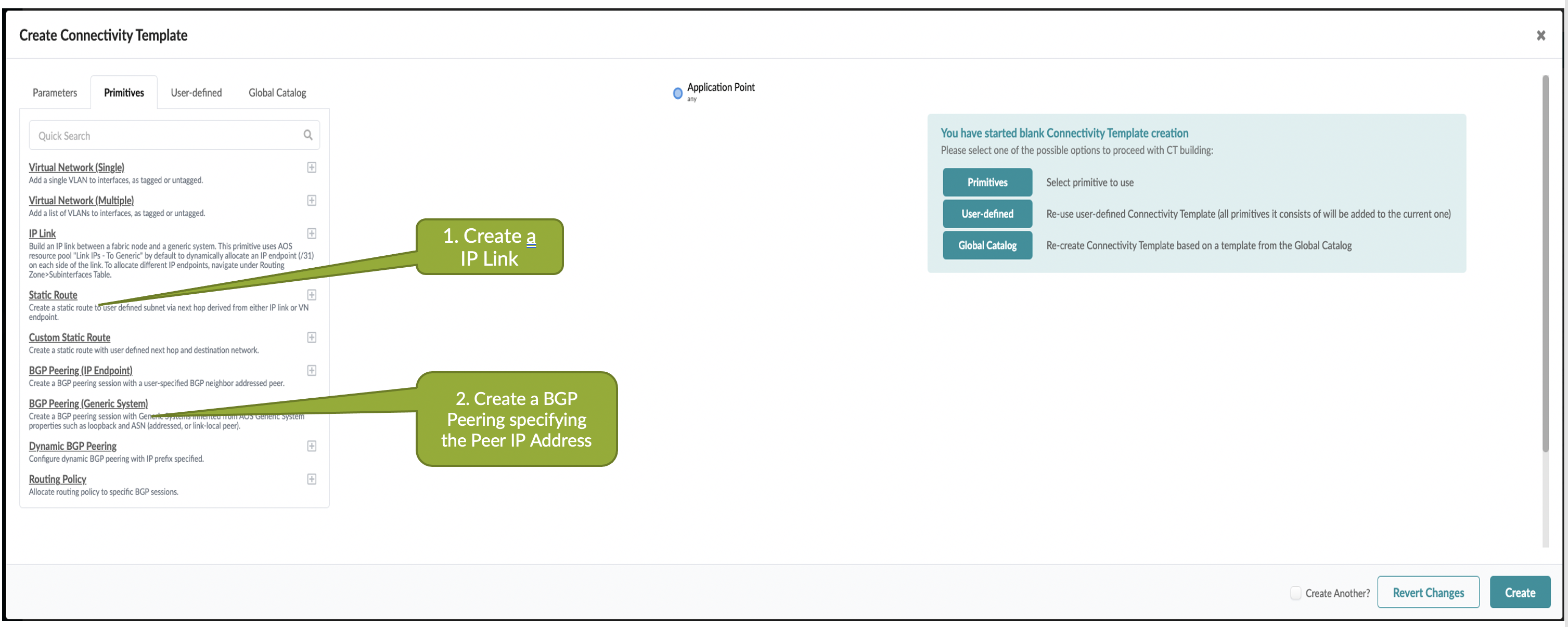
Specify the routing zone on which the IP link will be added and respective VLAN ID.

Set Up NSX-T VRF Lite
With NSX-T VRF Lite we are able to configure per tenant data isolation. Each VLAN can be considered as a separate channel for data plane under VRF gateways.
BGP peering can be built over these VLANs in VRF gateways for route exchange with the upstream Juniper Apstra fabric. Inter-VRF traffic is routed through the physical Juniper Apstra fabric.
- In NSX-T Manager create the VLAN Segments for the Uplink networks for the
tenants.
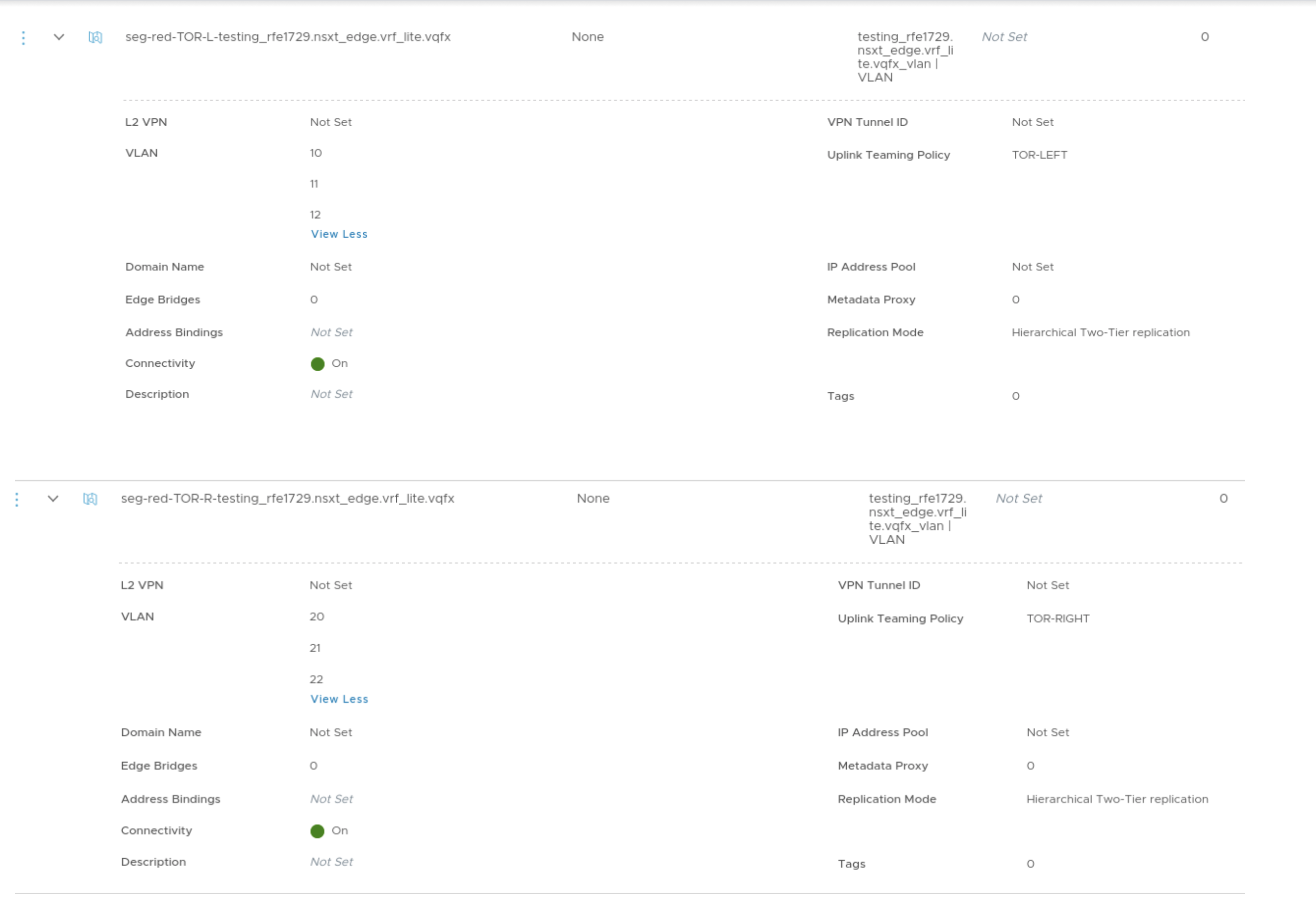
- In NSX-T Manager create the VRF-enabled Tier-0 Gateway for the tenants and add
the uplink interfaces on the VRF enabled Gateways. Thereafter add the BGP
neighbors.
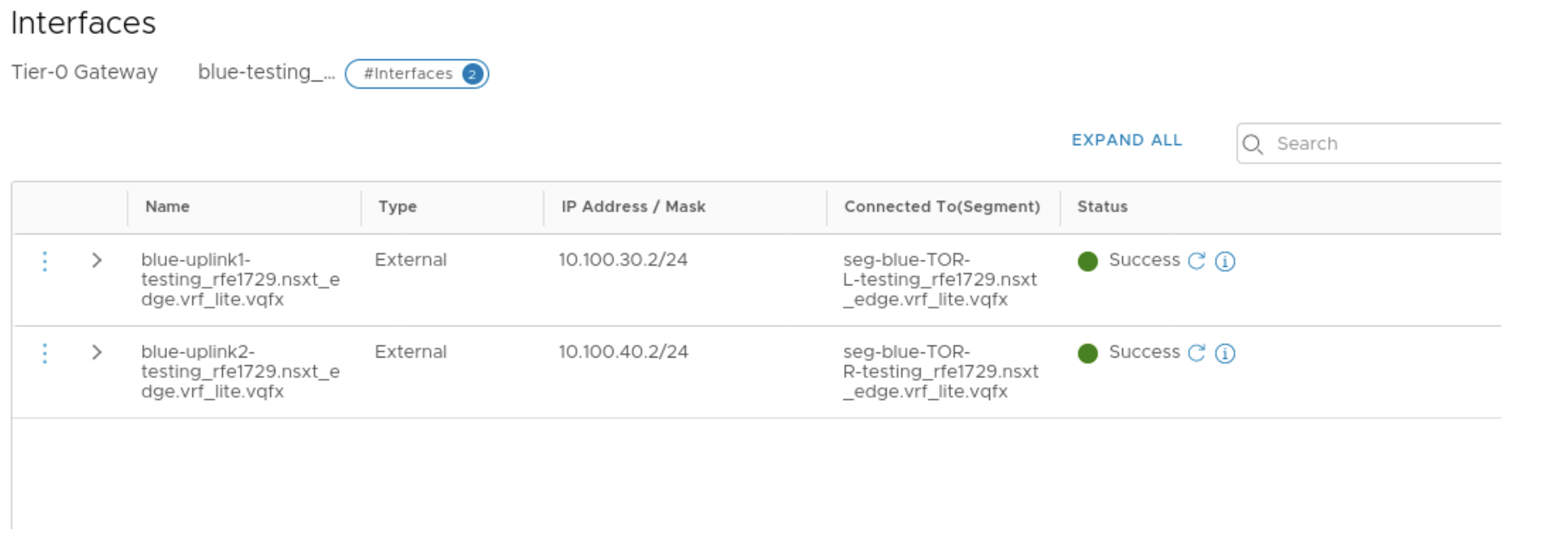

- From the Apstra GUI, setup the Routing Zone and the respective VNs on
which BGP session will be established towards ToR leaf devices as below:
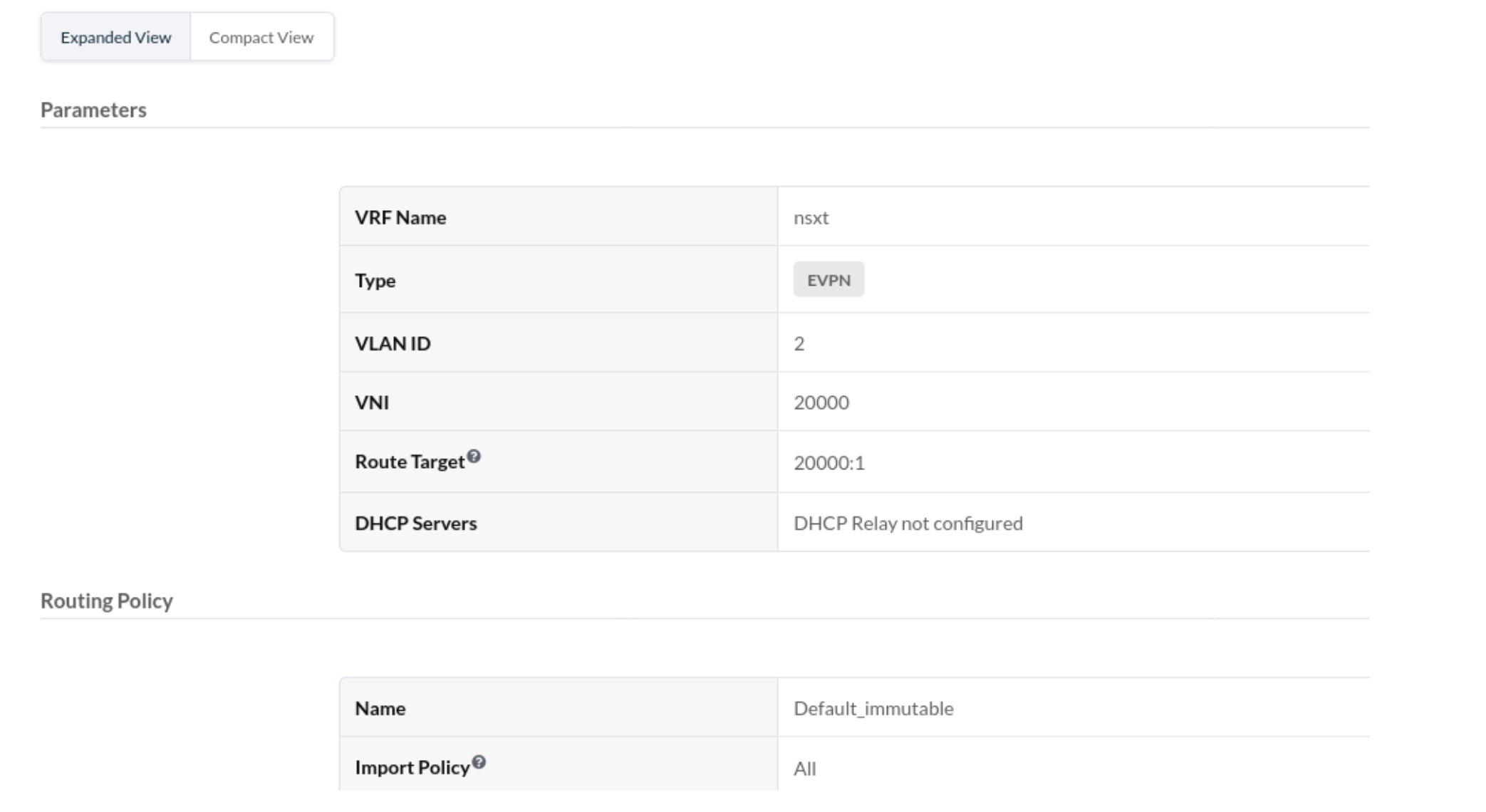
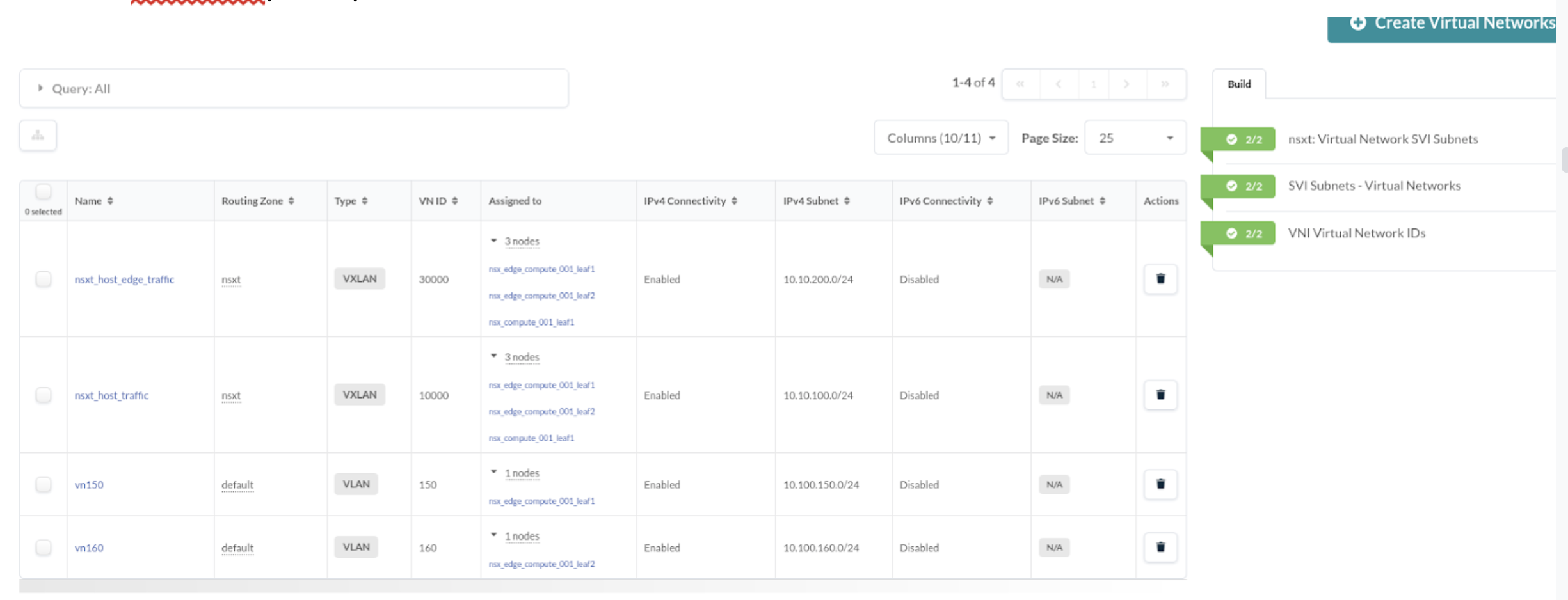
- Create connectivity template under Staged option for the VNs created before and
assign the respective interfaces towards NSX-T Edge VM.

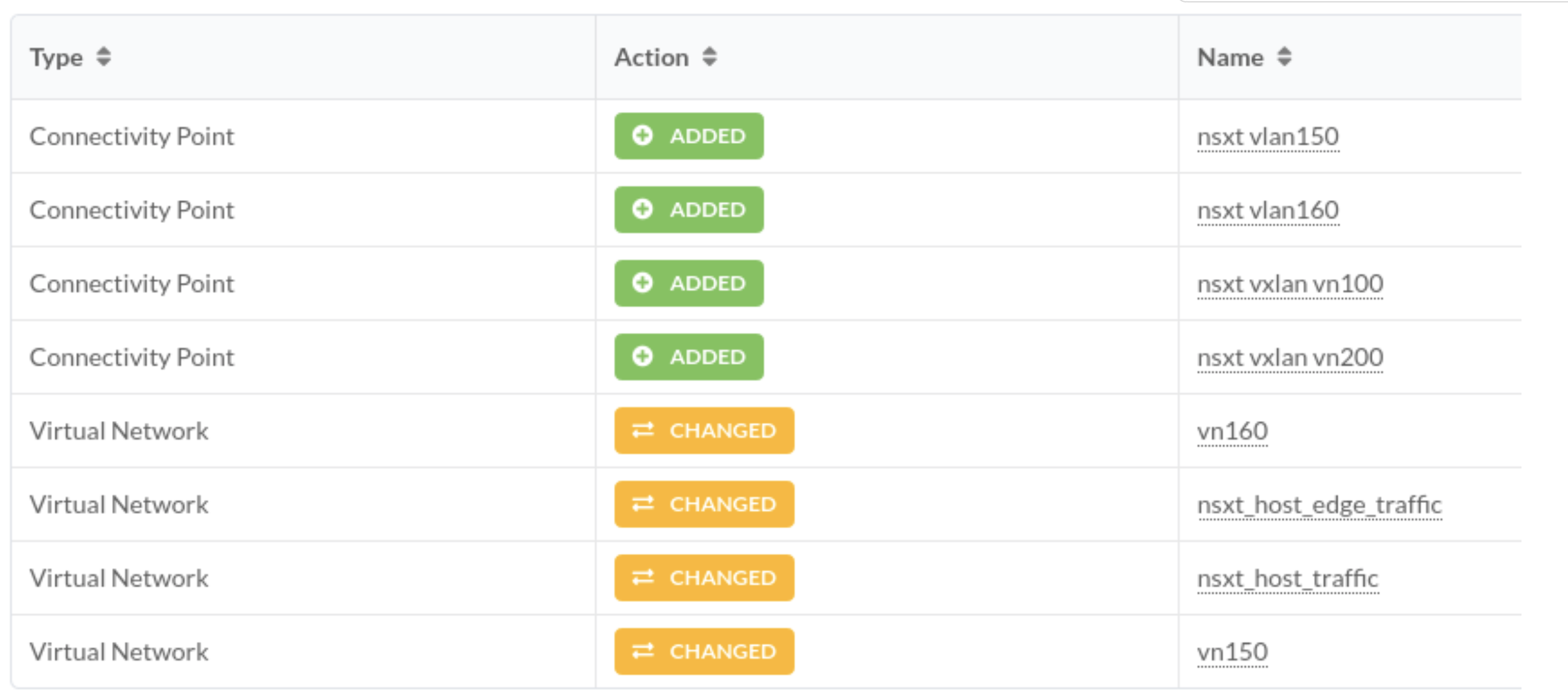
Set Up Default Static Route towards NSX-T Edge
Static default could be required in NSX-T edge setup to provide Internet connectivity. It can be taken care of by adding a default route(0/0) with the next hop pointing towards uplink ToR leaf using a connectivity template.
In the connectivity templates, assign the correct uplink: 
Navigate to Staged > Connectivity Templates > Add Template >
Primitives > Custom Static Route to inject default route: 
Set Up BGP IPv6 towards NSX-T Edge
We can enable IPv6-based BGP neighborship between T0 Gateway and ToR leaf using connectivity templates.
See "Set up NSX-T VRF Lite" section for details on creating uplink VLAN interfaces on T0 Gateway. This VLAN should be IPv6-enabled.
Create a connectivity template for each of the VXLAN VN and enable BGP towards IPv6
neighbor on NSX-T Edge as below: 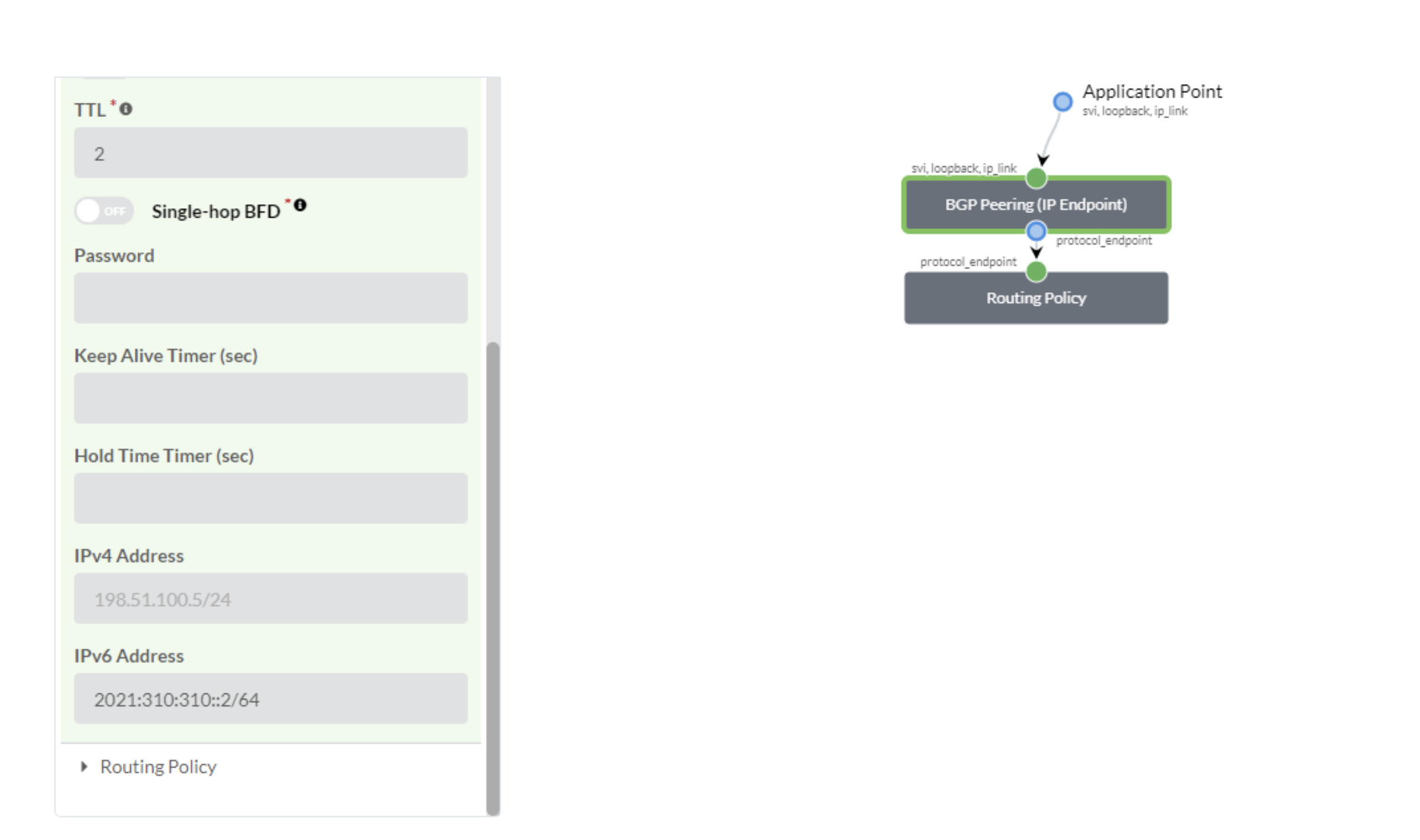
Un-assign BGP on VXLAN VN towards NSX-T Edge
Let's say BGP neighborship from Tier-0 Gateway in NSX-T needs to be torn down towards
ToR Leaf. In this case we need to unassign the interfaces in the Virtual
Network based Connectivity Template used for BGP peering so that it is in
the Ready state, and then delete the connectivity template: 





















